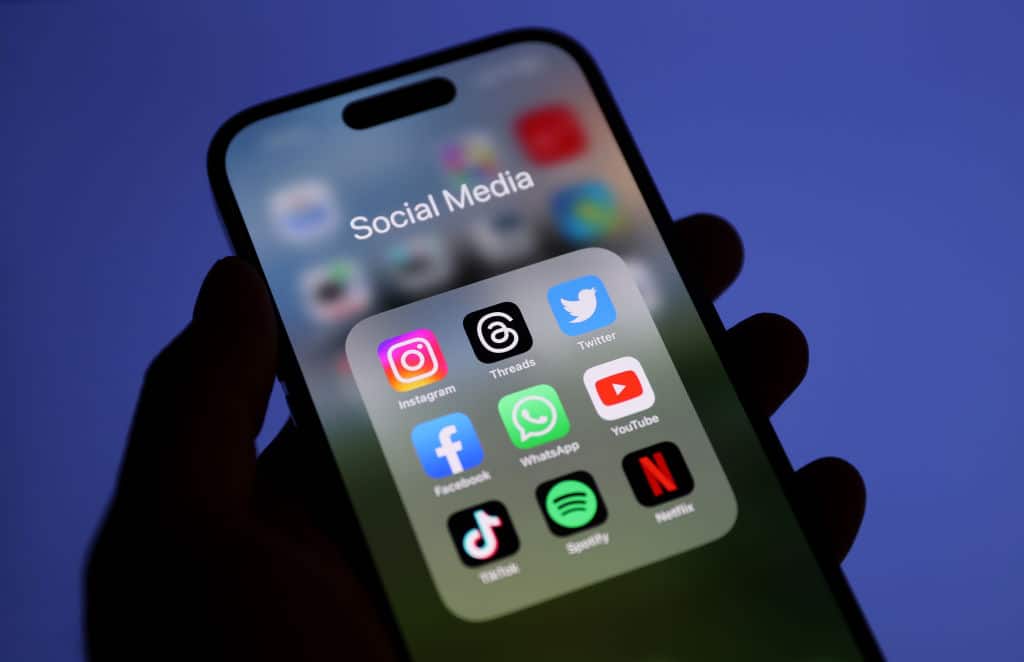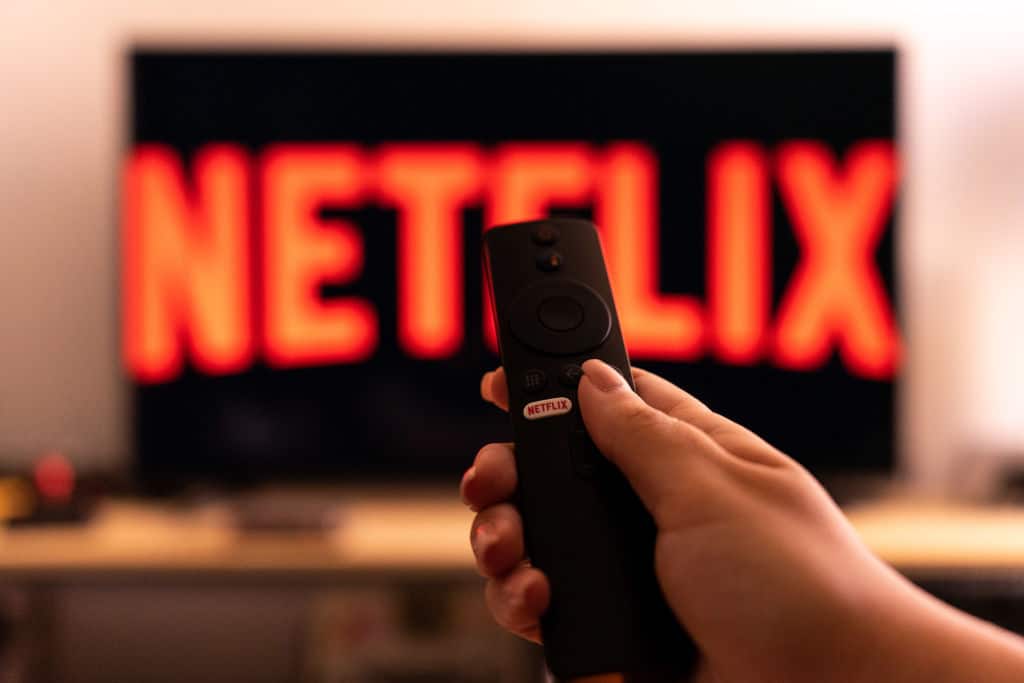When it comes to controversial advertising campaigns, they usually don’t have to do with income taxes. But a short-lived campaign from enterprise software company Intuit, which makes TurboTax, crossed that line and raised the ire of accountants.
Forbes’ Kelly Phillips Erb writes about the saga, in which a consumer-targeted message intended to be a bit cheeky and punny ended up insulting a group of professionals who actually rely on Intuit’s products. The centerpiece of the campaign is an advertisement in which a young woman announces to a bland-looking accountant that she’s leaving him for a younger and more fashionable man on her phone “who charges me less but gives me more” as part of a “tax break-up.” The younger man represents Intuit’s “TurboTax Full Service plan,” featuring human tax preparers who work with customers online or in person to complete their taxes.
Tax preparers, who have competed with TurboTax for many years, felt the campaign went too far. The unflattering portrayal of the accountant, plus the barrage of messaging telling consumers to “break up” with them, made many individuals and organizations upset. American Institute of Certified Public Accountants President and CEO Barry Melancon issued a statement saying, “The crucial role of CPAs, who serve as expert and trusted advisors to business owners and individuals, was not reflected in an unfortunate recent ad campaign launched by Intuit.” And the National Association of Tax Professionals said it will no longer accept Intuit’s sponsorships or exhibits at its conference because of the campaign’s “direct conflict with our members’ interests.” Predictably, Intuit decided to phase out the campaign.
While TurboTax is a well-known Intuit product, it’s only one. The company also owns QuickBooks and Mailchimp—financial management and email marketing platforms used by many businesses, including accountants—as well as consumer budgeting tool Credit Karma. In its last fiscal year, the bulk of Intuit’s growth came from those using its enterprise financial planning and email software. TurboTax online made up less than a quarter of the company’s total fiscal year revenues.
Intuit may be seeking more consumer tax business, but it may have damaged its larger customer base by trying to be funny. An average consumer may have giggled at the ad, but it seems unlikely that it would end up getting the desired results, especially since most consumers aren’t thinking about income tax prep in October. Instead, with this campaign, Intuit might have inspired more financial professionals to break up with them.
Loading...
Finding the right emotional balance is an important tool to make a campaign successful. Reticle AI is using artificial intelligence to determine the emotions that are present in campaigns, helping marketers strike the proper tone to get their messages across. I talked to Vice President of Business Development Tricia Allen about how this works. An excerpt from our conversation is later in this newsletter.
MARKETING MATTERS

Google is making a change to its Local Services Ads business next month that may impact roughly half of businesses advertising on the search engine, reports Forbes’ Brandon Kochkodin. Starting November 21, the local ads that pop up at the top of search results for users will be blocked if they aren’t linked to a Google Business Profile. This free profile indicates how businesses appear in search and is fully customizable by the business. But businesses need to be verified as legitimate through video or phone authentication, or by receiving a postcard. The authentication is an extra step, but it’s important that local businesses do it sooner rather than later. Studies have shown that 96% of people learn about local businesses online, and four out of five of those searches convert into business. In fact, nearly half of all Google searches are for local businesses.
SOCIAL MEDIA

Two social networks are making changes that may impact user safety. For as long as X was known as Twitter, users have been able to block other accounts—a step often taken when a user is bothered or harassed by someone. Previously, the blocked account couldn’t see or engage with posts from the user who blocked them. Now, users can see all posts from accounts that have blocked them, though they still can’t engage with them. X says this change allows “greater transparency,” so users can see if those who have blocked them are trying to “share and hide harmful or private information.” But critics have taken the other side of the argument: Stalkers and harassers can keep following accounts of those who have blocked them. X owner Elon Musk, who has made scores of controversial changes to the platform since he bought it in 2022, previously posted the blocking function made no sense. After this change was made, competing social media platform Bluesky gained 1.2 million users in two days, Social Media Today reported.
Changes to Instagram intended to prevent “sextortion” scams and protect teens are much less controversial. Now, users are unable to take screenshots or recordings of disappearing images, which are only intended to be viewed once. The Meta-owned platform is also testing safety notices to let teenagers know when they are exchanging messages with someone out of the country. Images flagged to contain nudity will be automatically blurred for users younger than 18. And accounts with “scammy” behaviors will not be able to see users’ following and followers lists, a common way some bad actors get information about a target’s friends and family.
BRANDS + MESSAGING

Netflix reported earnings last week, beating Wall Street’s expectations. The streaming giant made $9.8 billion in revenue in its most recent quarter, and gained 5.1 million subscribers. Now, nearly 283 million households have Netflix subscriptions, but the rate of new subscriber gain is slowing down. Forbes senior contributor David Bloom writes that for Netflix, this really shouldn’t be seen as a negative. After all, there is a finite amount of Netflix subscriptions that can be bought. What is more important, Bloom writes, is viewer engagement. Netflix reported that the average paid membership has two hours of engagement per day. It has an 8.2% viewership share in the U.S., according to Nielsen data. Netflix first became profitable in 2003, and to date only one other streaming service—Disney+—has posted a profit. With more emphasis on engagement, Netflix also seems to be the first of the streamers to start caring more about actual viewers and interaction.
ON MESSAGE
How Reticle AI Uses Technology To Determine Emotions In Ads
Emotion is important to marketing. Nostalgia, joy, adventure, curiosity and stress can all inform how consumers make purchases, choose what to eat or drink, or select service providers or leisure activities. Reticle AI uses artificial intelligence to determine the emotions that are present in marketing campaigns, as well as the emotions that consumers are experiencing when they see them, and makes recommendations for an optimal outcome. I talked to Vice President of Business Development Tricia Allen about how their method works and how it can get results. This conversation has been edited for length, clarity and continuity.
How can you use AI to determine things like sentiment and nostalgia?
Allen: We’ve trained our AI technology to understand emotional sentiment within digital content. We’re almost curating content into various emotions. If a brand wants to be associated with nostalgia, [or being] uplifting, joyful, nurturing, they can align their message within content that has that emotional sentiment. We can control how the content potentially makes someone feel. If you’re consuming content that makes you feel nostalgic, nurturing, uplifting, chances are you’re in that frame of mind. If you get served an ad that is in that nostalgic, nurturing tone, you’re more predisposed to take action. That action is that connectivity and attention that the brand is getting because it’s being served at the right time.
[AI has] that ability to take the universe of digital content, really cull it down, and categorize it into these emotional categories because of its understanding of human emotion.
There’s a lot of talk about AI systems not always giving accurate responses. With something difficult to quantify like emotion, how do you make sure that what comes out of your system is accurate to how people actually would feel?
While AI is extremely relevant and helpful from a marketing standpoint, you can’t get rid of that human oversight. I really believe strongly in that for many reasons. There’s bias that’s involved because the technology is only as good as the person who is training the platform, and if they have inherent bias, then the tech has bias. You need more than one person to be vetting that. In addition, what nurturing means to me might mean something completely different to you.
We actually have human labelers. We have them go in and vet our data on an ongoing basis, just to have those human eyes on it. We’ll go through, and if the technology has said this content is deemed to be nurturing, we want to see what a human actually thinks. We have that human component to make sure, because AI is not perfect. Even when it does get better, I still strongly believe you’re going to need human oversight, especially when you’re talking about emotion.
In your research, what are some of the emotions that people are reacting to the most, and what are some more prevalent themes?
A lot of the themes that people are looking for from a marketing standpoint are around joy and that feeling of happiness, and conversely, that feeling of stress and pressure. [It’s] not necessarily a positive emotion. Maybe it’s a negative emotion, because maybe I’m a vacation company and I want to provide you with a solution to help you overcome that stress.
If you are able to tap into emotion—both in marketing and also what is being looked for—what would be the perfect marketing campaign?
To me, the perfect marketing campaign is [one in which] you first do the insights work to understand the emotional footprint of that brand. How do people think and feel about your brand right now? How do you want them to feel about your brand? Then ensure that creative or the ad itself is designed to hit those key emotions. We’re kind-of that end piece. You’ve established how people think and feel. You’ve established: Do I want them to feel this way? If no, where are there distinctions that we can draw on to differentiate from the competition and then make sure that creative is dialed in?
The biggest area where I see brands fall down is they try and tap into emotion, but there’s a disconnect between the creative strategy and the insights work that was done. The insights work is never being brought to life, and then the creative is a bit of a disconnect. When all of those pieces line up, and you take that emotionally designed creative [and] put it in the same environment from a digital placement perspective, that’s the trifecta of emotional marketing.
FACTS + COMMENTS
When the World Series between the Los Angeles Dodgers and New York Yankees begins on Friday, it will be Sho time—for Dodgers star Shohei Ohtani, that is. With the Japanese phenom in the playoffs, Major League Baseball has actually seen more October viewership in his home country than in the U.S.
12.9 million: Japanese viewers of NLDS Game 5 on October 11, when the Dodgers beat the San Diego Padres to advance to the National League Championship Series. The U.S. had 7.24 million viewers, a record for a division series
$700 million: Value of Ohtani’s record-setting 10-year contract
‘I hope to continue to perform well as well for the fans in Japan’: Ohtani told Dodgers Nation, after saying that the team has also been “playing really well”
STRATEGIES + ADVICE
Yes, there is such a thing as too much positivity. Here are some ways to avoid glossing over your employees’ challenges and support your team through hard times.
Time management is difficult for executives. Here are five apps that can help you get more control over your work day.
Loading...
